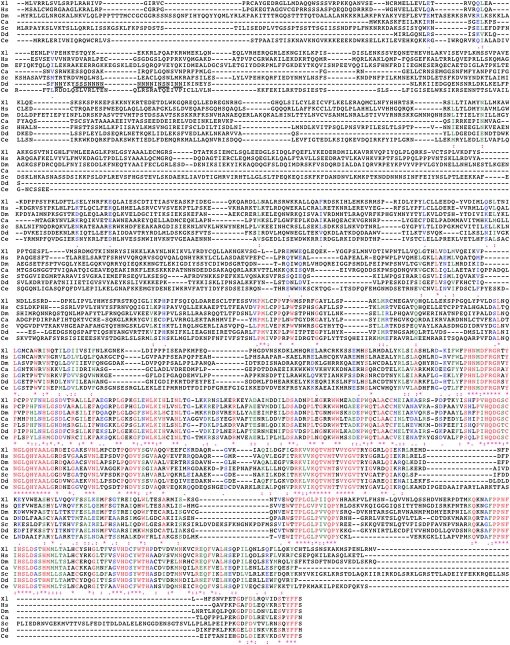FIGURE 4.
Sequence alignment of the Dictyostelium mitochondrial RNA polymerase protein sequence (Dd, accession no. AAK73754) with RNA polymerase sequences of Xenopus laevis (Xl, accession no. NP_001080987), Homo sapiens (Hs, accession no. AAH98387), Drosophila melanogaster (Dm, accession no. GK24692), Chenopodium album (Ca, accession no. CAA69305), Saccharomyces cerevisiae (Sc, accession no. EDV09806), and Caenorhabditis elegans (Ce, accession no. NP_001122532). The unique asparagine- (N) and serine- (S) rich sequences in the Dictyostelium protein not present in other RNA polymerases are underlined. The predicted cleavage site for the N-terminal mitochondrial targeting sequence, as predicted by various online tools, is located just upstream of the N- and S-rich sequences between residues Ser18 (S) and Phe19 (F). Identical residues are indicated by (*), while (:) or (.) indicate either strong or weak similarities, respectively. Per line, 120 residues are shown.

